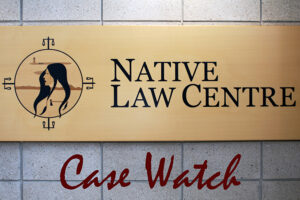Appeal dismissed. Descent from a single Indigenous ancestor does not entitle an assertion of section 35 rights. The appellants failed to put forward a clear definition of the collective of rights-bearers on whose behalf they purport to act.
This appeal concerns the standing of the appellant Hwlitsum First Nation (the “HFN”) to advance a representative action claiming Aboriginal rights and title. In the underlying action, the appellants sought declarations of Aboriginal title and rights on behalf of the HFN, which they assert is the modern day continuation of the Lamalcha. The HFN asserts that its members are the modern descendants and heirs of the historic pre-colonization Lamalcha Tribe of Indians, and as such are the inheritors of all the Aboriginal rights and title of the Lamalcha.
The issue of standing to advance a claim may be addressed as a preliminary matter in order to avoid unnecessary litigation (Campbell v British Columbia (Forest and Range), [2011] 3 CNLR 151 (“Campbell”)). The rights asserted by the HFN are collective rights. As such, proceedings to assert or enforce those rights must be brought on behalf of a group that is capable of advancing such a claim under s 35 of the Constitution Act, 1982 (Campbell). The criteria to be applied on an application to determine an appropriate collective to bring a representative action in Aboriginal title and rights cases, including the one at hand, are those identified by the Supreme Court of Canada (“SCC”) in Western Canadian Shopping Centres Inc v Dutton, 2001 SCC 46 (“Dutton”). A summary of those factors provided in Campbell and modified slightly to address the context of Aboriginal representative claims, are: 1) whether the collective of rights-bearers on behalf of whom they purport to act is capable of clear definition; 2) whether there are issues of law or fact common to all members of the collective so defined; 3) whether success on the petition means success for the whole collective so defined; and 4) whether the proposed representatives adequately represents the interests of the collective.
Ancestry alone is insufficient to establish that a modern collective has a claim to the rights of a historic group (Campbell). The HFN are attempting to construct a First Nation out of one family and to then assert s 35 Aboriginal title claims. The HFN submits the judge in the underlying action did not use the correct test. The approach identified by the HFN, however, applies to the substantive resolution of claims to Aboriginal rights and title, and not to the preliminary question of who has the legal capacity to advance them. The judge correctly determined that the test to be applied was set out in Dutton. The need to clearly define the collective in an Aboriginal rights or title case is even more important given the collective nature of the Constitution-protected rights at issue.
It is clear from Campbell that it is for plaintiffs and not the courts to define the group they purport to represent. In Tsilhqot’in Nation v British Columbia, [2008] 1 CNLR 112 (“Tsilhqot’in”), it “should always be the [A]boriginal community that determines its own membership.” The court’s role is to decide if the group members are determinable by clear, objective criteria. The appellants put forward inconsistent definitions of the group they purport to represent. They claim to represent the entire Lamalcha, or Lamalcha [I]ndigenous people, nation, or group. At the hearing, however, they claimed to represent only some of the Lamalcha, excluding “all Lamalcha who may be members of other bands, as well as the Lamalcha who are not descendants of Si’nuscutun.” As the trial judge noted, this is contrary to their assertion that the HFN and the Lamalcha are synonymous terms. They cannot define themselves as descendants of only one member of the ancestral group, and at the same time submit that they are the descendants of all the Lamalcha. This is fatal to the action proceeding under Rule 20-3 of the Supreme Court Civil Rules that govern the procedure for representative proceedings.
There is no dispute between the parties that the rights they assert are communal rights which belong to the Aboriginal community and not to any individual (Delgamuukw v British Columbia, [1998] 1 CNLR 14 (“Delgamuukw”); R v Powley, [2003] 4 CNLR 321). Aboriginal rights and title vest in the historic Aboriginal community at the time of contact in the case of Aboriginal rights, and at sovereignty in the case of Aboriginal title (Delgamuukw; Tsilhqot’in). The historic Aboriginal community in issue in the present case is the Lamalcha Tribe of Indians. In order to assert a claim under s 35, the HFN must be capable of advancing a claim to the historic and communal rights of the Lamalcha (Campbell). The HFN cannot assert such rights, because they define themselves as only one branch of the descendants of the Lamalcha Tribe, or those Lamalcha who are descendants of Si’nuscutun and who are not members of any other Indian band. Si’nuscutun himself, however, as an individual, never held and could never hold any of the claims for Lamalcha rights. Those rights belong to the Lamalcha community and Si’nuscutun only enjoyed the benefit of the rights by virtue of his membership in that community. It is settled law that Aboriginal title cannot be held by individual Aboriginal persons (Delgamuukw). The HFN claims to represent one historical Lamalcha member and his descendants, rather than the entire historical Lamalcha collective. Since it is the historic community, and not one of its members, which holds the rights in issue, the appellants cannot represent the collective.
Editor’s Note: On March 28, 2019, the application for leave to appeal from the judgment of the Court of Appeal for British Columbia, 2018 BCCA 276, was dismissed.


